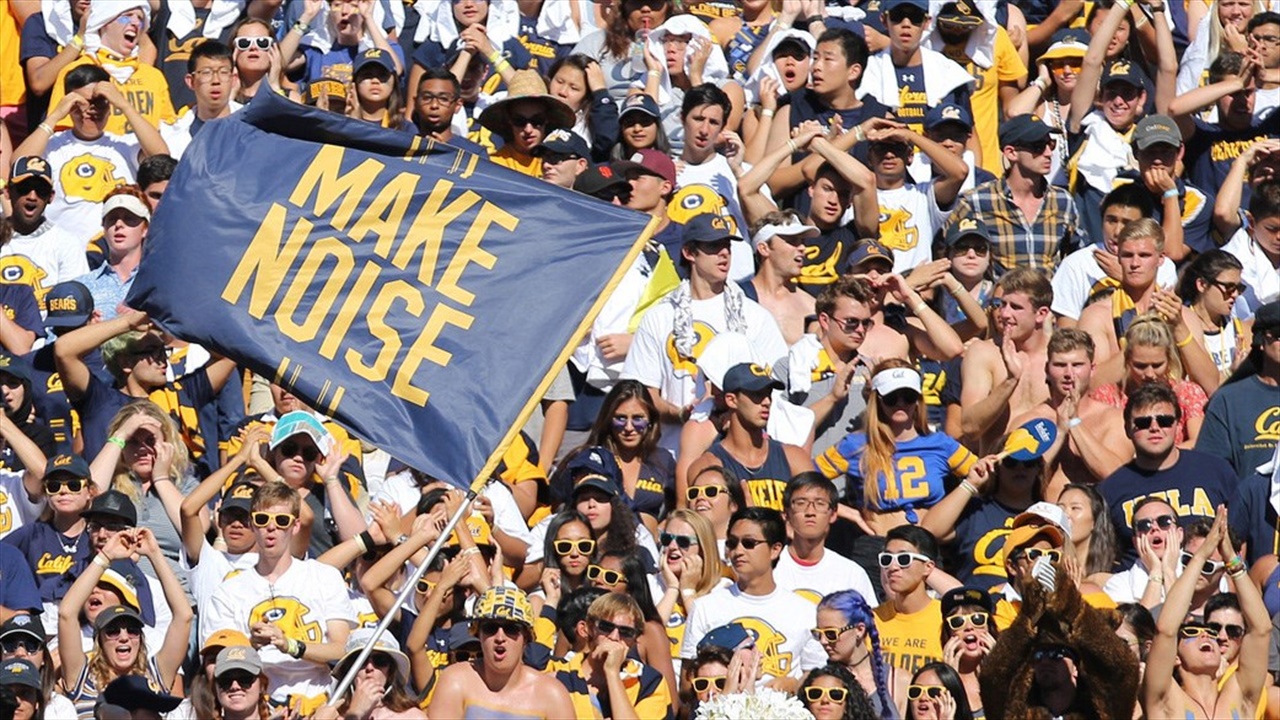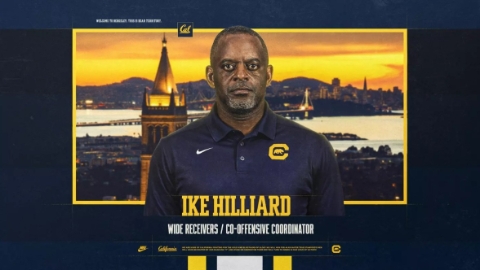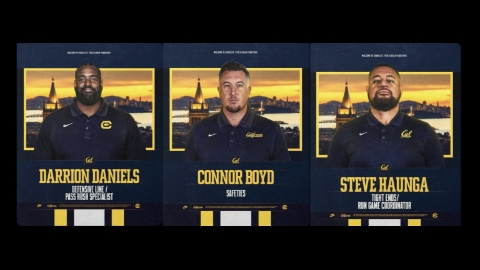In the next seven days, Cal believes it will have a clear answer to its athletic future. Will the ACC offer admission? Will the Big Ten come up with enough of a financial commitment to make Cal viable? Or will Cal be forced to remain in a reimagined Pac-12 whose members will primarily be Group of 5 members from the American and Mountain West Conference?
Let’s start with setting some context. And that doesn’t include how we got here and who and what may be to blame for the current situation. What’s relevant is where we are today and how Cal can emerge in a place that preserves the scope and ambition of its athletic endeavors and the essential yet ephemeral connection it provides the world’s leading public institution of higher learning to its students, alumni, and donors. The other helpful backdrop is that college football is in the middle of an increasingly accelerating realization that it is better defined as a multi-billion dollar media business rather than a bastion of amateur athletics.
Without opining on whether this is a positive change for the constituencies involved or not, let’s accept this is our reality. And that for at least two decades, Cal and many other schools have supported a diverse number of sports on the backs of the revenue being generated by Football and to a far lesser extent Men’s Basketball. That revenue became an entitlement that has shifted the decision-making power of college athletics from the hands of University presidents to those of Sports Network executives. And the status quo of powerful conferences and their highly paid commissioners only adds to the underbrush that delays what is inevitable.
A unified BCS Football organization that can manage broader TV rights would be to the benefit of all of the schools, overseeing the competitive dynamics to create an even playing field inclusive of NIL, the transfer portal, and the operation of the highly lucrative and fan-pleasing 8+ team playoff. In the wake of Cal finding itself on the wrong side of a game of musical chairs, the imperative becomes ensuring that it has a place in this future entity. Unfortunately, this is not a situation where time and patience will create that reality. A single season for Cal outside the BCS will almost certainly prove fatal to its ability to retain its student-athletes, support their non-revenue sports, and sustain the donor and fan interest that are the lifeblood of the athletic department.
Cal is not alone, their long-time rival Stanford finds itself in the same predicament. And whilst the financial dynamics are different for the two schools, they are working in lockstep to preserve the future of their athletic departments. It’s my understanding that there is robust communication and alignment of interest between soon-to-be retired Chancellor Christ and Stanford interim President Richard Saller.
Both schools have made joining the B10 the top priority with the ACC a less ideal lifeline. The options beyond that are simply different takes that would best remind one of rearranging the deck chairs on the Titanic. According to multiple sources, the B10 Presidents are in strong support of the additions of Stanford and Cal. The overwhelming logic of the school's academic credentials, the opportunity to meaningfully mitigate the travel requirements for the other West Coast B10 members, and access to the Bay Area’s media markets which are rife with the alumni of the historic and future members of the B10.
The impediment is that FOX Sports does not believe the additional allocation of capital for Cal and Stanford is worth the value that they will bring. Thus, they are not willing to offer anything even remotely in the neighborhood of what Oregon and UW have been committed. Whilst one can argue that Cal and Stanford should be near-term immune to the financials given the chance that there will be no life raft of any value remaining, the reality is that simply being a member of the Big10 (or any conference) is not a sufficiency. The B10 does not want wildly uncompetitive members, whilst the value of being a BCS school for Cal and Stanford becomes only optics and the dire consequences to athletic department revenue, fan, and donor interest remain.
As has been reported by ESPN and others, the ACC needs 12 of their current 15 schools to approve any new additions and currently, the Bay Area schools are one vote shy of meeting that requirement. The ACC provides a potential bridge to the final evolution of BCS football yet in almost every other way imaginable is problematic. No West Coast pod means travel requirements will be beyond onerous and highly expensive further reducing the value of the revenue stream they provide.
I’m told that one certainty in a situation where very little can be relied on is that regardless of the outcome of Cal’s conference affiliation, the school will be forced to reduce the number of sports it supports. In my mind, this is a long overdue albeit painful measure needed to ensure the long-term viability of the athletic department.
As Chancellor Christ, AD Jim Knowlton, and their advisors burn up the phone and zoom lines between now and Friday, the fulcrum of their efforts will be focused on convincing the media experts who are currently unconvinced that Cal and Stanford will add significant revenue heft to their TV deals. In my mind, those folks have short memories and limited imaginations. To wit:
- The commonly repeated narrative that Cal doesn’t invest in its football and basketball programs is stale news that no longer reflects reality. This isn’t to say that the University has made the necessary commitments over the past dozen years, but rather that Cal’s donor base has bridged the gap such that Cal’s total football budget now finds itself in the top half of the Pac-12 of 2023 (inclusive of USC and UCLA). That takes into account coaching salaries, the size, and salaries of the support staff, recruiting budgets, etc.
- Cal’s NIL Collective is among the largest and most viable in the Pac-12 and arguably would be in the top half of a newly formed B10 inclusive of Stanford and Cal. The proof is obvious given the success that both Men’s Basketball and Football had this past offseason in the portal
- The changes above are recent and should start to show up in success on the football field and basketball court these upcoming seasons, reigniting the fan base and meaningfully changing the calculus of any TV viewership analysis
- Only five short years ago, Stanford was a national power in football with regular appearances in the Rose Bowl. Less than fifteen years ago, Jeff Tedford led Cal to a seven-year run of national prominence as the clear 2nd best program in the Pac-10 behind only Pete Carrol’s storied USC program. And most importantly, Cal’s TV ratings and game attendance during that period were top-tier by any relative measure
- Cal has one of the largest alumni bases in the country and one of the wealthiest. The potential value of those eyeballs should not be lost on FOX or other media networks. Stanford’s are even wealthier albeit it against a smaller and less engaged fan base
- The Bay Area is the nation’s 7th largest media market and it’s home to hundred’s of thousands of alums of Ohio State, Virginia, Duke, Michigan, Northwestern, et al not to mention UCLA, USC, UW, and Oregon. That’s an audience that is going to care about Stanford and Cal as they are their opponents and rivals within their conference.
- Beyond the revenue sports, the ACC and B10 networks need shoulder content and the value of Cal and Stanford’s Olympic sports offerings is as good as any two schools in the nation. Not to mention the media value and inclusion of the star-studded alums in the NFL, NBA, and MLB from the two schools
- It’s an understandable concern from the networks and members of the ACC and B10 that Cal and Stanford’s administrations may not be as fully committed to their revenue sports as they would like. However, the answer is as simple as asking the question. The leaders at both schools now have the type of fulsome clarity which only the potential extinction of their current athletic departments can provide. Christ and Saller can and should lay out for their potential partners how they plan to invest in football and basketball, not only to help them be relevant on the national stage but to effectively buttress the capital needed for their non-revenue sports. As pointed out above, Cal can point to its near-term cutting of non-revenue sports as well as its passionate and deep-pocketed donor base as well as the historical embrace of a winning team by its fans to underscore their potential as part of their forward-looking plan
This next week is going to be a roller coaster ride that has no rails and one in which Cal does not control its own fate. The hope is that the TV execs and potential new conference partners can think long-term and take the time to truly understand the value of having Cal as part of the future of College sports.





